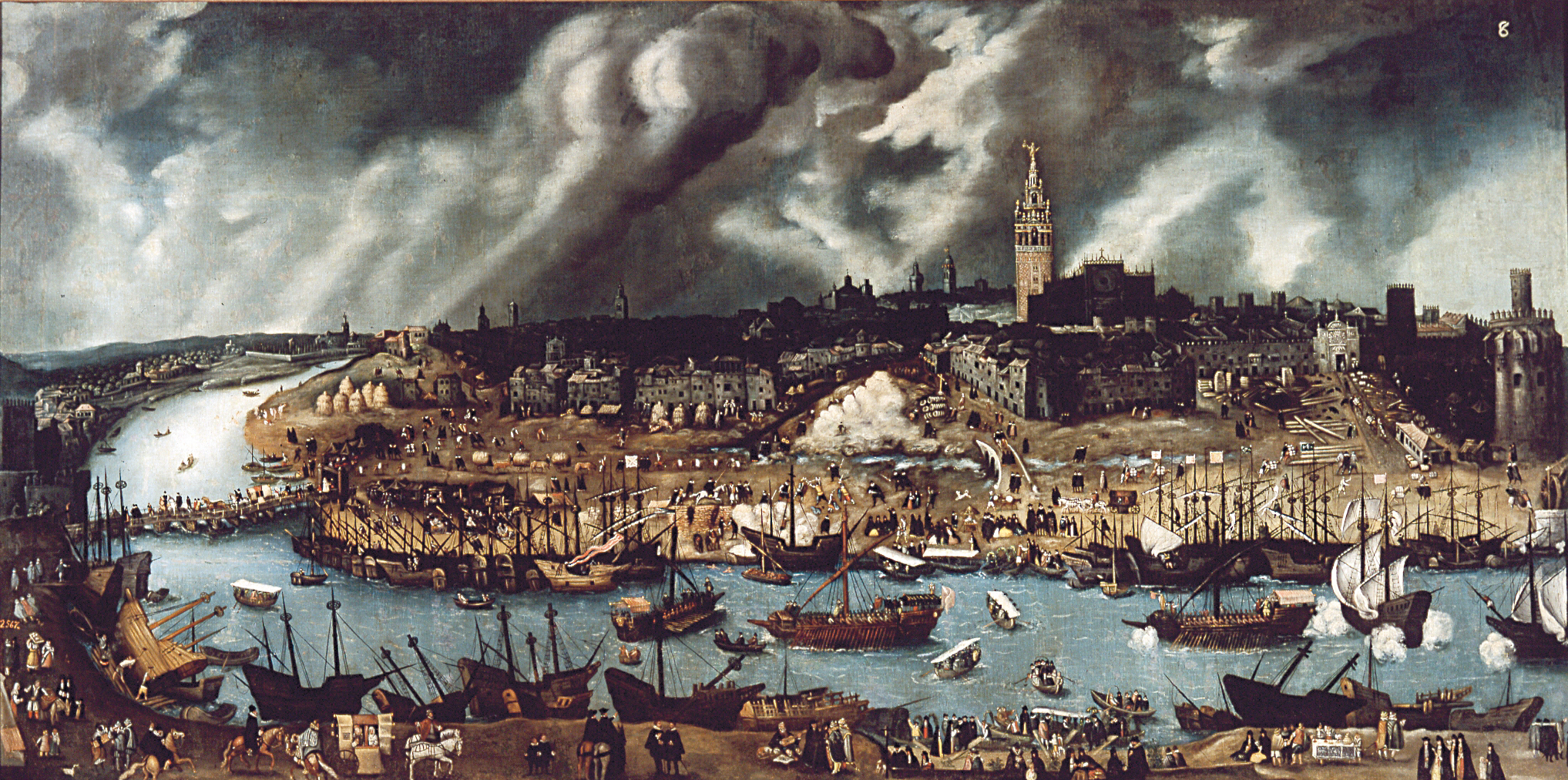 |
| Seville - 17th Century Port |
At first I was attracted by the sheer opulence of Seville, but soon realised that as with many rich cities it was also plagued by extreme poverty. Every sort of vagabond, beggar, or whore was drawn to the city in the 17th Century in the hope of a small share of its riches. Just the sort of climate in which to set a novel! Spain has always been intensely Catholic and at this time followers of other faiths were persecuted by the Inquisition. I wanted to contrast this with the repressive anti-Catholic regime of Jacobean London, so knew I needed to research both locations, and always had in mind that my very English lady would travel to (and be amazed by) Seville.
 |
| 'Triana' by Emilio Sánchez Perrier in the Museo de Bellas Artes, Seville |
I was helped enormously by finding 'Aristocrats and Traders: Sevillian Society in the Sixteenth Century' by Ruth Pike. My novel is set just into the 17th Century at the time of the Gunpowder Plot so this was fantastic background. It provided me with census accounts and information about the particular area of Seville I was researching - Triana - the part where artisans had the fire-trades such as sword-making and pottery-firing, crafts kept across the river from the main city in case of an outbreak of fire.
 During my research phase I ordered as many books as I could that were in English, including Mary Elizabeth Perry's 'Gender and Disorder in Early Modern Seville' which told me a lot about the treatment of women and the lower classes.
During my research phase I ordered as many books as I could that were in English, including Mary Elizabeth Perry's 'Gender and Disorder in Early Modern Seville' which told me a lot about the treatment of women and the lower classes.
Perry also wrote a seminal book on moorish women - The Handless Maiden.
Online research and books are all very well, but eventually I did have to make the research trip, and try to glean as much as I could about the old Seville, buried beneath the modern city. A visit allows you to record things that other people might miss - such as what you are walking on. Here - some photos I took of tiled floors with moorish designs. The herringbone brick with 'olambrillos' (decorative ceramic squares) was particularly common in the 17th century.
It was fantastic to see so many buildings still well-preserved, and to soak up the heat and the atmosphere of Catholic Spain. This was something that is not obvious unless you go there - the sheer number of weeping madonnas in shop windows, the many hidden churches in courtyards with leather flaps over the doors to protect the icons from the sun. A bonus was to see the Inquisition Museum, which is very tastefully done despite its grim subject matter, and to visit the Golden Tower where I was able to take phographs of a huge map of 17th Century Seville that is not available online. The slightly blurred photographs are because I had to take the pictures through the top of a glass cabinet.
On my return I had lots of leaflets and booklets which needed to be translated my by local Spanish teacher so I could understand them as my Spanish is very limited!
It's expensive to travel abroad, but is it worth it? Absolutely. Not only did I have a fantastic holiday where I was able to have romantic evenings with my husband, eating Tapas at a little pavement cafe under the orange trees, or watching Flamenco, but also the visit later allowed me to 'live' in 17th Century Seville when I was writing. Here I am at the Alcazar, sitting on tiles that could possibly have been made in the 17th century in Triana, Seville.
My novel set in Jacobean London and Golden Age Seville is A Divided Inheritance, more about it can be found on my website.




